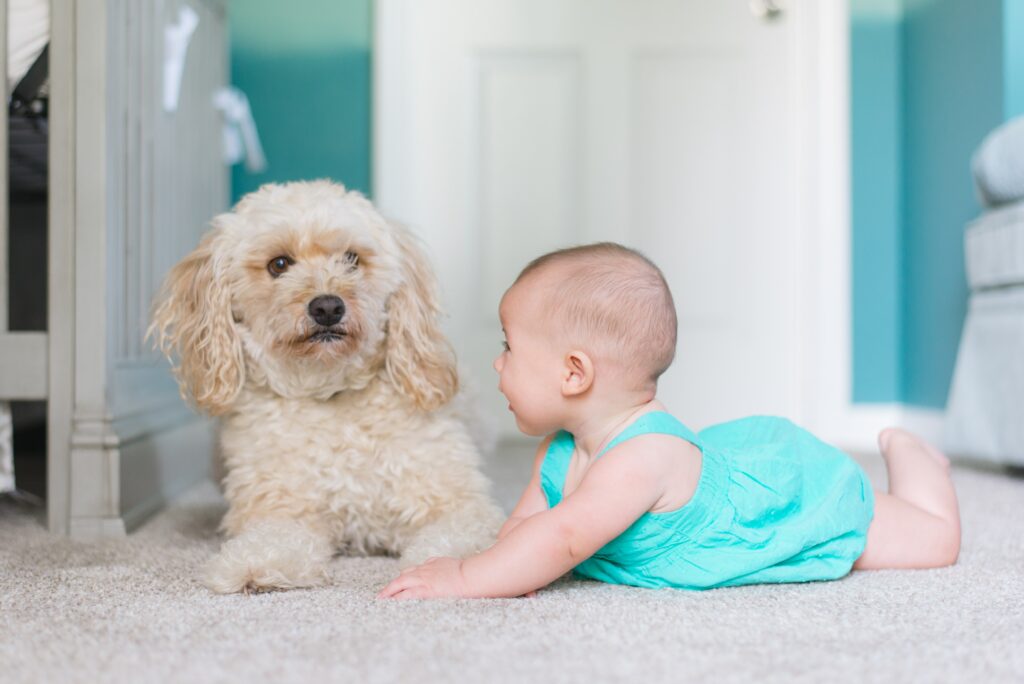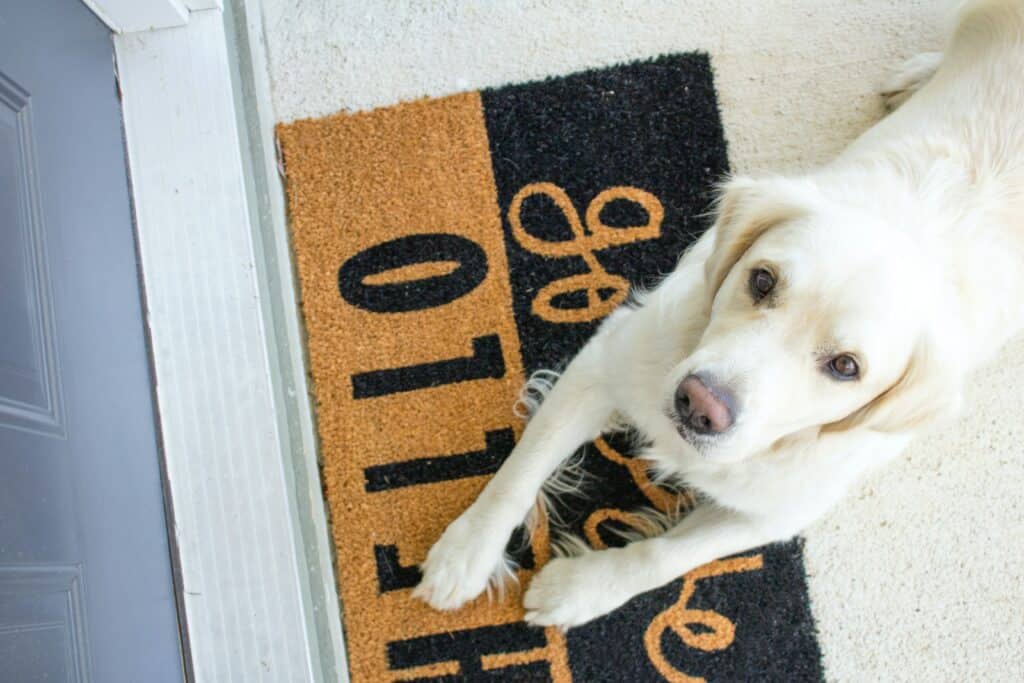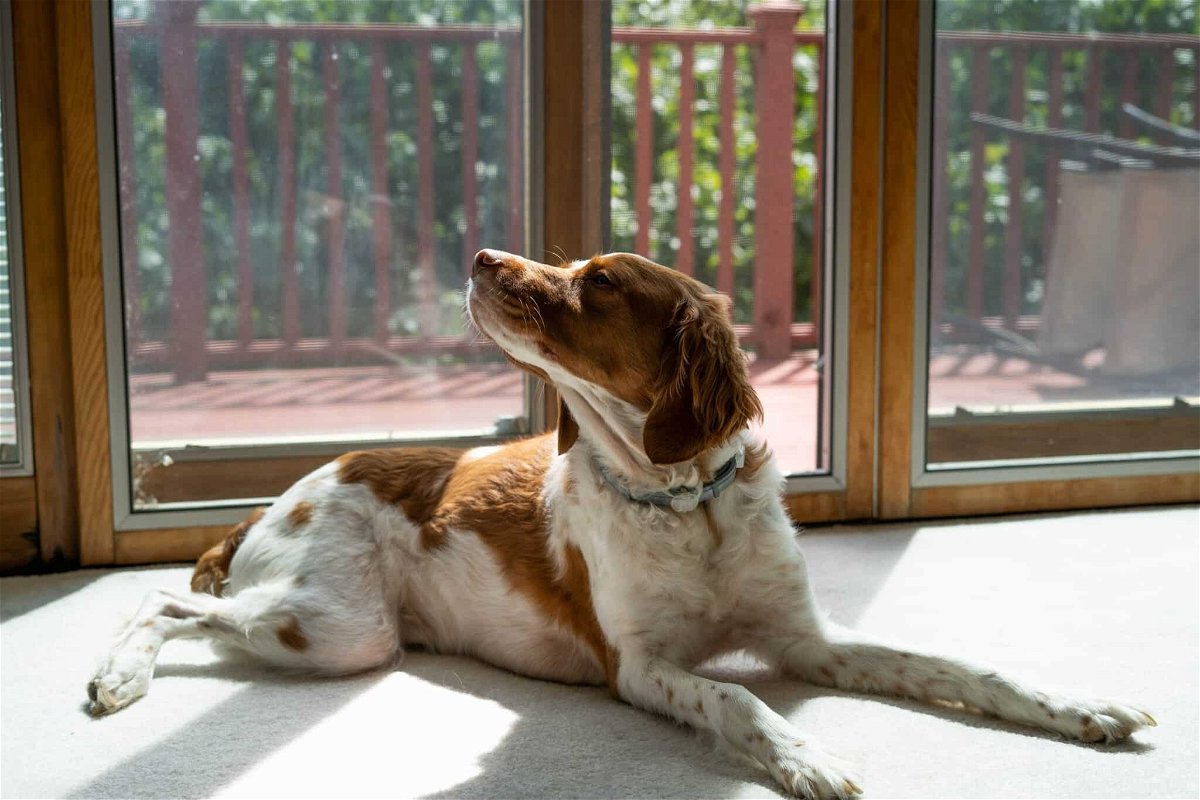We're an affiliate
We hope you love the products we recommend! Just so you know, we may collect a share of sales or other compensation from the links on this page at no additional cost to you. Thank you if you use our links, we really appreciate it!
If you have a dog and a toddler in the same house, it can be challenging to keep both within safe limits of each other. This is why you might need a dog gate in your home.
But, how do dog gates work? And, are you aware of the benefits and possible cons of these accessories?
In this blog post, we’ll take a closer look at what dog gates are, how they work, and some of the main benefits & cons of having one in your home. Watch out for some tips for installing and using these gates safely and effectively.
Also, we have compiled a list of the best dog gates, make sure you have a look at that list, we’re sure you will find a gate that is suitable for your home.
What Is a Dog Gate?
A dog gate is a physical barrier designed to prevent your furry friend from accessing certain areas of your home. They are a great way to keep your dog safe and contained while still giving them their freedom.
Dog gates come in a variety of sizes and styles, so you can find one that meets your needs and fits the scope of your space.
Most dog gates feature adjustable panels, allowing you to customize the width and height to fit different doorways or staircases.
How Do Dog Gates Work?
Most dog gates are designed to be placed across doorways or other openings. They typically have either a swinging door or a pressure-mounted panel that your dog can’t push through.
Permanent gates have two main parts: a frame that attaches to doorways, archways, or stairs, and a swinging door that allows people to pass through while keeping dogs contained.
The frame of the dog gate is usually made of wood or metal, and it is screwed or bolted into the doorway.
The door of the gate is usually made of mesh or see-through material so that dogs can see what’s happening on the other side but can’t get through.
Whether you choose a simple free-standing gate or a more complex permanent system, dog gates are designed to be easy to install, use, and operate.
Should I Use a Dog Gate?
To answer this question, you need to take a look at the layout of your home, the dog-safe places, and those where you want them to avoid.
Dog gates are typically used to block off doorways, kitchen areas, fireplaces, and other hazardous areas. If you don’t have many of these in your home, then a dog gate might not be necessarily helpful.
However, if your home has multiple levels, rooms, or areas that you’d like to keep your dog out of, then a gate can be a helpful way to mark out the boundaries.

They are also safety accessories and if you have small children in your house, then they will be useful in keeping them separated from the dogs.
If you are a homeowner, then we recommend that you go for the permanent dog gates. If you live in rental apartments, you can choose the freestanding gates to give you the convenience of changing the layout with ease.
Dog gates are commonly made with plastic, wooden, or metallic materials. Your desired material should be that which works well with your canine friend.
If you have a heavy chewer, you should avoid the wooden and plastic gates and go for the metallic ones.
Benefits of Dog Gates
1. Keeps your dog safer
Dog gates create a safe environment for your pet to explore without worrying about them getting into trouble or wandering away from home.
This is perhaps the most vital reason why you need to get a good gate for your dog. Dogs will not readily know what is safe and unsafe for them.
They may move around sniffing and exploring unsafe places like the kitchen, fireplace, trash area, and even the pool area, not knowing the hazard therein.
With a dog gate, you are now sure that your dog is restricted to play and relax in the right area.
2. Limits access to furniture
If you have an active dog who loves jumping onto your furniture, then it can be frustrating when they get into the house with tracked dirt and directly leap onto your couch.
With a dog gate, you can restrict your dog from accessing your furniture as you clean their paws when coming from that evening walk.
3. Creates an outdoor playing area
If you are out in the yard with your canine friend, you can use a gate to delineate a safe playing area for them.
This will confine them from running into your garden, garage, and other places you may not want them to be.
4. Separate pets in your home
If you have multiple dogs, then you might have come across situations where they scramble for space, dominance, and recognition.
Having a dog gate will help you keep the pets separated for a while as they get used to each other. A gate is also a useful accessory when introducing a new pet to a resident one.
5. Helps in boundary training
Dog gates are also helpful for training purposes. They can help Fido learn to stay in their designated areas and know the spaces that may be dangerous for them.

Disadvantages Of Dog Gates
While dog gates can be a helpful way to keep your dog contained in a safe area of your home, there are also some cons that you may encounter:
1. One downside to note is that dog gates can be a tripping hazard, particularly if you have small children or elderly family members who may not know how to use them properly.
2. Dog gates can give your dog a sense of isolation, which can lead to behavioral issues such as excessive barking. If your dog is used to having free roam in the house, suddenly confining them to one space may expose them to developing stress and anxiety.
3. Dog gates can be an obstacle for people who are trying to get into the house. If the gate is not positioned correctly, it can be difficult to open and close, especially for people with mobility issues.
Tips For Using a Dog Gate Safely and Effectively
If you found a dog gate that is a good choice for your home, there are some tips to keep in mind to use it safely.
- The first thing you would want to ensure is that your gate is securely mounted or firmly placed so that your pet can’t push it down or knock it over. When using a permanent gate, you need to double-check to be sure that all screws are tightened properly.
- You also need to carefully select the size of the gate opening according to the size of your dog. If possible, opt for an adjustable width so you can widen it if needed. This will also help prevent any potential escape attempts, especially if you have an escape artist.
- Take notice of how often you open and close the gate. Over time, the hinges can wear down and become loose, making the gate less secure and easier for your dog to escape.
Wrapping Up
If you’ve been asking yourself ‘how do dog gates work?’ then you now know their main function is to keep your canine companion safe in specific areas of your home.
You should take into account the size of your canine friend, their personality, the layout of your home, and your budget before deciding on what to go for.
Make sure to follow all instructions carefully when installing and using a dog gate for maximum value and safety.
What type of gate do you think would work best for your home? Let me know in the comments below, I’d love to hear from you.
Laura is the founder of Furs'n'Paws. She is a also a pet writer and expert with more than 20 years of experience of working with dogs and cats. She developed a very strong love for animals at a young age. Her passion led her to establish a thriving pet sitting and dog walking business in Dubai. As an expert in pet training, behavior, and nutrition, Laura is committed to helping pet owners and pet lovers by offering high-quality information on a wide range of topics.



No responses yet